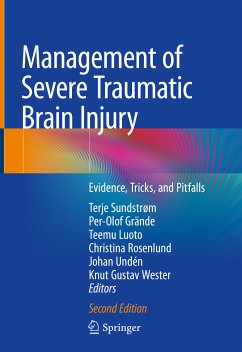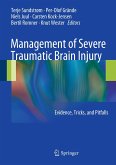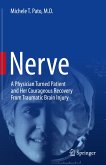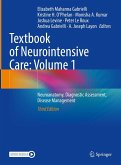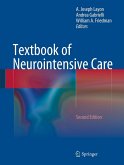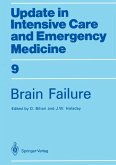Management of Severe Traumatic Brain Injury (eBook, PDF)
Evidence, Tricks, and Pitfalls
Redaktion: Sundstrøm, Terje; Wester, Knut Gustav; Undén, Johan; Rosenlund, Christina; Luoto, Teemu; Grände, Per-Olof


Alle Infos zum eBook verschenken

Management of Severe Traumatic Brain Injury (eBook, PDF)
Evidence, Tricks, and Pitfalls
Redaktion: Sundstrøm, Terje; Wester, Knut Gustav; Undén, Johan; Rosenlund, Christina; Luoto, Teemu; Grände, Per-Olof
- Format: PDF
- Merkliste
- Auf die Merkliste
- Bewerten Bewerten
- Teilen
- Produkt teilen
- Produkterinnerung
- Produkterinnerung

Hier können Sie sich einloggen

Bitte loggen Sie sich zunächst in Ihr Kundenkonto ein oder registrieren Sie sich bei bücher.de, um das eBook-Abo tolino select nutzen zu können.
This comprehensively updated second edition features major revisions, 24 new chapters and more than 40 new authors, reflecting both the advances and key challenges within the field. Offering a systematic guide to the management of children and adults with severe traumatic brain injury throughout the entire chain of care, it includes evidence-based recommendations for each diagnostic and therapeutic measure, together with tips, tricks and pitfalls. The authors are all highly experienced clinicians and researchers who work with neurotrauma patients on a daily basis, and the editors represent the…mehr
- Geräte: PC
- ohne Kopierschutz
- eBook Hilfe
- Größe: 17.57MB
![Management of Severe Traumatic Brain Injury (eBook, PDF) Management of Severe Traumatic Brain Injury (eBook, PDF)]() Management of Severe Traumatic Brain Injury (eBook, PDF)81,95 €
Management of Severe Traumatic Brain Injury (eBook, PDF)81,95 €![Traumatic Brain Injury Rehabilitation (eBook, PDF) Traumatic Brain Injury Rehabilitation (eBook, PDF)]() Traumatic Brain Injury Rehabilitation (eBook, PDF)135,95 €
Traumatic Brain Injury Rehabilitation (eBook, PDF)135,95 €![Traumatic Brain Injury (eBook, PDF) Traumatic Brain Injury (eBook, PDF)]() Traumatic Brain Injury (eBook, PDF)81,95 €
Traumatic Brain Injury (eBook, PDF)81,95 €![Nerve (eBook, PDF) Nerve (eBook, PDF)]() Michele T. PatoNerve (eBook, PDF)32,95 €
Michele T. PatoNerve (eBook, PDF)32,95 €![Textbook of Neurointensive Care: Volume 1 (eBook, PDF) Textbook of Neurointensive Care: Volume 1 (eBook, PDF)]() Textbook of Neurointensive Care: Volume 1 (eBook, PDF)137,95 €
Textbook of Neurointensive Care: Volume 1 (eBook, PDF)137,95 €![Textbook of Neurointensive Care (eBook, PDF) Textbook of Neurointensive Care (eBook, PDF)]() Textbook of Neurointensive Care (eBook, PDF)129,95 €
Textbook of Neurointensive Care (eBook, PDF)129,95 €![Brain Failure (eBook, PDF) Brain Failure (eBook, PDF)]() Brain Failure (eBook, PDF)73,95 €
Brain Failure (eBook, PDF)73,95 €-
- -22%11
-
The book helps professionals provide more systematic and higher-quality care in prehospital settings, primary hospitals, neurosurgical departments, neurointensive care units, and rehabilitation facilities. It is intended for all healthcare personnel involved in the multidisciplinary management of patients with head injuries, especially those in emergency care, neurosurgery, anesthesiology, radiology, and rehabilitation.
Dieser Download kann aus rechtlichen Gründen nur mit Rechnungsadresse in A, B, BG, CY, CZ, D, DK, EW, E, FIN, F, GR, HR, H, IRL, I, LT, L, LR, M, NL, PL, P, R, S, SLO, SK ausgeliefert werden.
Hinweis: Dieser Artikel kann nur an eine deutsche Lieferadresse ausgeliefert werden.
- Produktdetails
- Verlag: Springer International Publishing
- Seitenzahl: 689
- Erscheinungstermin: 8. Juni 2020
- Englisch
- ISBN-13: 9783030393830
- Artikelnr.: 59594222
- Verlag: Springer International Publishing
- Seitenzahl: 689
- Erscheinungstermin: 8. Juni 2020
- Englisch
- ISBN-13: 9783030393830
- Artikelnr.: 59594222
- Herstellerkennzeichnung Die Herstellerinformationen sind derzeit nicht verfügbar.
Secondary clinical assessment.- A wake-up test in the neurointensive care management of patients with severe TBI: pros and cons.- Intracranial pressure (ICP):Theoretical and practical aspects.- Brain tissue oxygen monitoring.- Monitoring microdialysis.- Jugular bulb measurements (SJVO2).- Cerebral blood flow (CBF) and cerebral metabolic rate (CMR).- Transcranial Doppler (TCD).- Near infrared spectroscopy (NIRS) or cerebral oximetry.- Clinical Neurophysiology: Evoked Potentials.- Clinical Neurophysiology: Continous EEG Monitoring.- Imaging of severe traumatic brain injury in the neurointensive care unit.- Serum protein biomarkers in the management of severe traumatic brain injury.- Cardiopulmonary aspects.- Renal aspects.- Neuroendocrine aspects.- Part VIII Treatment in neurointensive care.- Guidelines for treatment of patients with severe traumatic brain injury.- The Lund therapy: a physiological approach.- Pharmacological neuroprotection.- Subacute surgery in neurointensive care.- Management of extracranial injuries.- CSF Drainage.- Hyperventilation.- Osmotherapy.- Barbiturates for ICP management.- Management of fluid and electrolyte disturbances.- Sedation: including pain treatment and withdrawal symptoms.- Nutrition.- Managementof CNS-related infection.- Management of extracranial infections.- Temperature management.- Seizures.- Paroxysmal sympathetic hyperactivity.- Prophylaxis against venous thromboembolism.- Coagulopathy (bleeding tendency).- Corticosteroids.- Management of acute psychiatric problems.- Part IX Rehabilitation and follow-up.- Rehabilitation after severe TBI.- Long-term follow-up.- Part X Outcome and prognosis.- General overview.- Somatic consequences.- Neuropsychiatric consequences.- Neuropsychological perspectives.- Neurosurgical challenges.- Minimally conscious and vegetative state.- Specific peadiatric concerns.- Socioeconomic consequences.- Subacute MR Imaging: Traumatic axonal injury, brain stem lesions and prognostic factors.- Neurodegeneration and dementia.- Part XI Research in severe TBI.- The neurointensive care unit as a platform for advanced clinical research.- Current state-of-the-art in neurotrauma research.- Index.
Secondary clinical assessment.- A wake-up test in the neurointensive care management of patients with severe TBI: pros and cons.- Intracranial pressure (ICP):Theoretical and practical aspects.- Brain tissue oxygen monitoring.- Monitoring microdialysis.- Jugular bulb measurements (SJVO2).- Cerebral blood flow (CBF) and cerebral metabolic rate (CMR).- Transcranial Doppler (TCD).- Near infrared spectroscopy (NIRS) or cerebral oximetry.- Clinical Neurophysiology: Evoked Potentials.- Clinical Neurophysiology: Continous EEG Monitoring.- Imaging of severe traumatic brain injury in the neurointensive care unit.- Serum protein biomarkers in the management of severe traumatic brain injury.- Cardiopulmonary aspects.- Renal aspects.- Neuroendocrine aspects.- Part VIII Treatment in neurointensive care.- Guidelines for treatment of patients with severe traumatic brain injury.- The Lund therapy: a physiological approach.- Pharmacological neuroprotection.- Subacute surgery in neurointensive care.- Management of extracranial injuries.- CSF Drainage.- Hyperventilation.- Osmotherapy.- Barbiturates for ICP management.- Management of fluid and electrolyte disturbances.- Sedation: including pain treatment and withdrawal symptoms.- Nutrition.- Managementof CNS-related infection.- Management of extracranial infections.- Temperature management.- Seizures.- Paroxysmal sympathetic hyperactivity.- Prophylaxis against venous thromboembolism.- Coagulopathy (bleeding tendency).- Corticosteroids.- Management of acute psychiatric problems.- Part IX Rehabilitation and follow-up.- Rehabilitation after severe TBI.- Long-term follow-up.- Part X Outcome and prognosis.- General overview.- Somatic consequences.- Neuropsychiatric consequences.- Neuropsychological perspectives.- Neurosurgical challenges.- Minimally conscious and vegetative state.- Specific peadiatric concerns.- Socioeconomic consequences.- Subacute MR Imaging: Traumatic axonal injury, brain stem lesions and prognostic factors.- Neurodegeneration and dementia.- Part XI Research in severe TBI.- The neurointensive care unit as a platform for advanced clinical research.- Current state-of-the-art in neurotrauma research.- Index.
